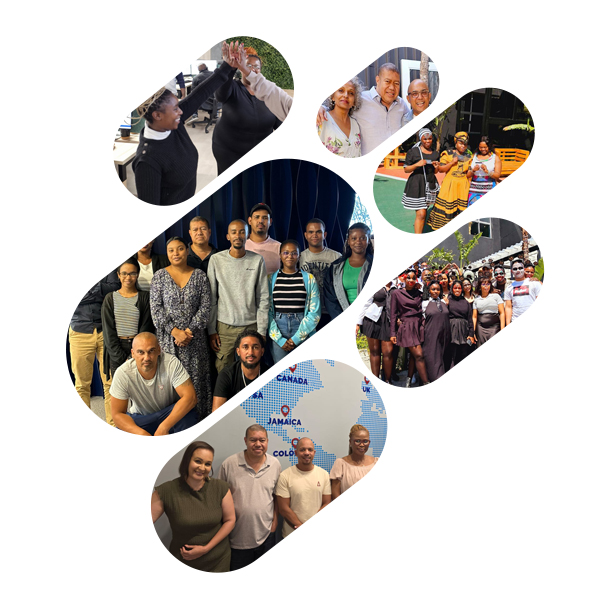
In today’s ever-evolving professional landscape, the most successful individuals aren’t those who wait for opportunities—they create them. Whether you’re eyeing a leadership position, shifting industries, or simply aiming to stay relevant in a competitive market, having a clear and actionable professional development plan is your blueprint for success.
Particularly in South Africa, where the business world is becoming more dynamic and diverse, career growth depends on experience and planning. That is where a professional development plan comes into action.
We at HGS South Africa believe we empower professionals to manage their growth with planning, clarity, and confidence. This blog will take you through a step-by-step process for developing your professional development plan to make your career advancement purposeful and quantifiable.
What Is a Professional Development Plan?
A professional development plan (PDP) is a structured framework that outlines your career goals and the steps you need to take to achieve them. It helps you:
- Reflect on your current skills and competencies
- Identify areas of improvement
- Set realistic and measurable objectives
- Align with your organisation’s growth pathways or personal career ambitions
Whether you’re an employee seeking growth or a job seeker preparing for your next opportunity, a professional development plan is a powerful tool for guiding your decisions and keeping you accountable.

Step-by-Step Professional Development Planning
Let’s explore the six core steps to creating an effective professional development plan that works in theory and practice.
Step 1: Self-Assessment – Understanding Your Current Position
The foundation of any strong professional development plan is self-awareness.
Start by evaluating:
- Your current job role and responsibilities: Are you thriving or stagnating?
- Your strengths: What skills do you excel at naturally?
- Your weaknesses or gaps: Where do you face challenges or require improvement?
- Feedback from peers or supervisors: What have others noticed about your performance?
Tools you can use:
- SWOT Analysis (Strengths, Weaknesses, Opportunities, Threats)
- 360-degree feedback
- Personality or skills assessments
This step is about knowing where you stand. You can’t map your destination without understanding your starting point.
Step 2: Setting SMART Goals – Defining Clear Objectives
Once you’ve completed a thorough self-assessment, the next step is to define your professional development goals. Use the SMART goal framework:
- Specific: What exactly do you want to achieve?
- Measurable: How will you track progress or success?
- Achievable: Is the goal realistic based on your resources and timeline?
- Relevant: Does it align with your long-term career ambitions?
- Time-bound: What’s the deadline?
Professional goals examples:
- "Gain a project management certification in the next 6 months."
- "Improve public speaking skills by attending two workshops by year-end."
- "Apply for a team lead position within the next 12 months."
Clarity in your goals helps break your ambitions into manageable actions and keeps your development plan outcome-driven.

Step 3: Identifying Development Activities – Building Your Skill Set
Now that you have clear goals, it’s time to identify the required actions.
Development activities could include:
- Formal learning: Enrol in online courses, certifications, or workshops relevant to your career development goals.
- On-the-job experience: Request cross-functional projects or take on stretch assignments within your current role.
- Mentoring and coaching: Seek out professionals who can guide you, especially those in roles you aspire to.
- Reading and self-study: Stay up to date with industry trends, tools, and best practices.
If exploring growth in sectors like BPM or customer experience, check out the latest customer service jobs available with HGS South Africa.
Remember: development isn’t limited to technical skills. Personal development goals for work examples include enhancing emotional intelligence, improving time management, or cultivating leadership presence.

Step 4: Creating an Implementation Timeline – Staying on Track
A development plan is only effective if it’s followed consistently. That’s why a precise timeline is crucial.
Create a realistic roadmap by breaking each goal into:
- Milestones: Short-term targets that signal progress (e.g., “Complete Module 1 of my course by March 15”)
- Deadlines: Ensure every goal and task has a time limit
- Weekly/monthly check-ins: Reserve time for reviewing what you’ve done and what’s next
You can use Trello, Notion, or a simple Excel sheet to organise and visualise your timeline.
In South Africa’s competitive industries—finance, IT, or call centre management—professionals who stick to structured timelines tend to stand out and advance faster.
Step 5: Building a Support Network – Leveraging Relationships
You don’t have to (and shouldn’t) build your professional development plan in isolation.
Support networks may include:
- Mentors or managers: For guidance and career advice
- Accountability partners: Colleagues or friends who check in on your progress
- Professional networks or communities: Platforms like LinkedIn or industry-specific groups
- HR or Learning & Development teams: Particularly useful if you’re developing a professional development plan for employees within your organisation
In South Africa, where cultural diversity and collaboration are central to the work environment, a strong support network is often critical in realising your career ambitions.
Pro tip: Don’t just seek support—offer it as well. Peer mentoring is an excellent way to sharpen your leadership and communication skills while contributing to others' growth.
![]()
Step 6: Tracking Progress and Adapting – Ensuring Continuous Growth
A professional development plan isn’t a “set it and forget it” document. It’s dynamic and should evolve as your role, interests, or industry shifts.
Best practices for tracking and adapting:
- Quarterly reviews: Reflect on what’s working, what’s stalled, and what needs updating.
- Performance metrics: Are you getting closer to your goals? Has your productivity or visibility increased?
- Flexible mindset: Be open to revising your goals or development activities as you grow.
Whether you’ve landed a new role or identified a new career path, adaptability is key to sustainable professional development.
Conclusion
A professional development plan isn’t just about getting a promotion—it’s about becoming the best version of yourself in your chosen field. It’s a robust roadmap that keeps you aligned, motivated, and continuously evolving.
For professionals in South Africa, where industries are modernising rapidly and new opportunities are emerging across BPM, IT, finance, and retail, having a personal development strategy is necessary, not a luxury.
At HGS South Africa, we are passionate about helping individuals develop professionally and personally. Whether you're beginning your career journey or looking to take it to the next level, building your professional development plan can unlock powerful transformation.
Frequently Asked Questions (FAQs)
Why is a professional development plan essential?
It provides structure, clarity, and motivation to guide your career growth, helping you stay aligned with your long-term goals while adapting to industry changes.
What’s the difference between a personal and a professional development plan?
A personal development plan focuses on individual growth areas such as emotional intelligence or health, while a professional plan targets career advancement, skill building, and job-related goals.
How long should a professional development plan cover?
Typically, a PDP covers 6 to 12 months. However, it can be extended to align with longer-term career aspirations.
How can I stay motivated to follow my development plan?
Break goals into smaller milestones, track progress, celebrate wins, and surround yourself with supportive mentors and peers. Regularly revisit your “why” to stay inspired.
 SA
SA Canada
Canada Colombia
Colombia India
India Jamaica
Jamaica Philippines
Philippines UK
UK US
US



